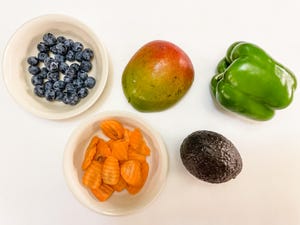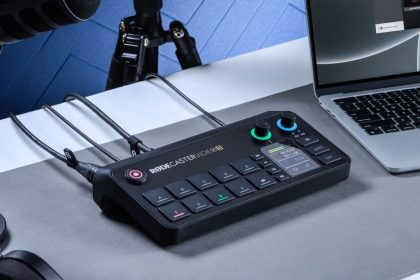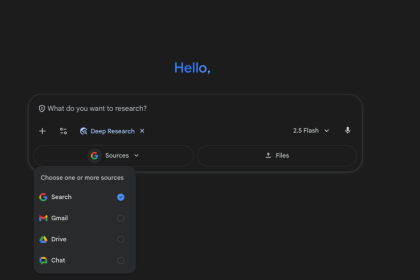Why You Can Trust CNET
Our expert, award-winning staff selects the products we cover and rigorously researches and tests our top picks. If you buy through our links, we may get a commission. Reviews ethics statement
When you buy produce by weight, some fruits and veggies offer more bang for your grocery buck. Here are the types of produces that end up mostly in your mouth and not in the compost bin.
Pamela Vachon Contributor
Pamela is a freelance food and travel writer based in Astoria, Queens. While she writes about most things edible and potable (and accessories dedicated to those topics,) her real areas of expertise are cheese, chocolate, cooking and wine. She’s a culinary school grad, certified sommelier, former bartender and fine dining captain with 10 years in the industry. When not sitting at the keys, she leads in-home cheese classes, wine tastings and cocktail demonstrations.
Expertise Wine | Cheese | Chocolate | Cooking
When you’re paying for an item by weight, in culinary math terms the yield, or “edible portion” of a given item factors into its actual cost, which is necessary for chefs to consider when accounting for how to price a dish. In short, some types of produce are a better deal, ounce for ounce, than others.
Does that mean you should be calculating every element that goes into your home-cooked meals? Probably not. (Or rather, hopefully not? Given the state of the economy and the price of eggs, some of us might have to.) But culinary math can help determine what you’re actually spending in the produce aisle versus what you’re potentially wasting.
Whether you’re about saving pennies or saving the environment by considering food waste (or you’d like to do both), there are food items that have a lower value considering how much of them you can consume.
Calculating value based on edible yield of fruits and vegetables Fruits and vegetables offer starkly different overall value when edible yield is considered.
Amanda Capritto/CNETFear not, this isn’t an exercise that involves actually measuring the weight of banana peels or trying to assign a percentage to how much of the ends of zucchini you throw out. Even chefs make use of handy yield charts that inform, on average, how much of a given item is usable.
Determining the actual cost of an ingredient, then, involves calculating the new price based on the edible portion. For instance, if a head of cauliflower costs $1.49 per pound, and only 55% of it is usable — once you remove the core and leaves — then the per pound cost increases by almost double for the usable portion. You may have spent about $3 on two pounds of cauliflower, but you’re getting to use only a little over a pound of what you paid for. To determine the actual cost, then, you take the purchase cost and divide by the yield percentage, expressed as a decimal.
For example: $1.49/.55 = $2.70
A head of cauliflower has a considerably low edible yield.
Alina Bradford/CNETSuddenly, that head of cauliflower doesn’t seem like so much of a bargain. Consider, also, that chefs might routinely make use of more of various fruits and vegetables than do home cooks. Broccoli stems can be peeled, cooked and pulverized into a cream of broccoli soup, and onions can go, skin and all, into a pot of stock.
Lemons and limes typically get zested before they get juiced, and even pineapple skin has culinary applications. Pineapple fronds may even end up as garnish in the cocktail menu. Watermelon rinds can be pickled. Are you pickling your watermelon rinds at home? Didn’t think so.
Produce with the lowest yield (most waste) Next time you load up on bell peppers at the market, consider that you’ll only be consuming about 65% of the total product.
Getty ImagesYou don’t need to be purchasing in bulk by weight to consider how much of an ingredient you’re actually going to be able to use. Understanding the yield of certain items can help you look at the price tag a little differently, as well as consider how much is headed for the trash.
Here are 12 common items in the grocery store that have the lowest percentages of edible portion, and therefore the highest waste. (Garden peas have the smallest usable portion, at 38%, but lucky for all of us, if you’re actually shelling peas at home, you probably grew them yourself.) Using current prices I collected from Instacart.
ItemPriceEdible portionActual cost (value of edible portion)Cauliflower
$2.99 each
55%
$5.43 each
Asparagus
$2.99/lb.
56%
$5.34/lb.
Broccoli
$2.99/bunch
61%
$4.90/bunch
Fennel bulb
$2.69 each
60%
$4.48 each
Green leaf lettuce
$1.99/head
67%
$2.97/head
Bell peppers
$1.50 each
65%
$2.31 each
Butternut squash
$3.37 each
66%
$5.10 each
Banana
45 cents each
67%
67 cents each
Cantaloupe
$4.99 each
50%
$9.98 each
Pineapple
$5.99 each
52%
$11.52 each
Watermelon
$6.99 each
47%
$14.87 each
Grapefruit
$2.29 each
47%
$4.87 each
According to the US Environmental Protection Agency (while it still exists), food waste accounts for 60% of greenhouse gas emissions. Even if you’re a consummate recycler who always brings your own grocery bags to the store, if you don’t have a way to deal with food waste (a local food waste recycling program, a backyard compost pile, or a countertop food recycling appliance), the produce you buy most often may be contributing to the problem more than how it’s packaged.
Berries may seem expensive at first glance, but they’re one of of the highest yield types of produce you’ll find at the market.
Driscoll’sRead more: I Cut My Kitchen Waste by 80% in One Week With This Small Appliance
Fruits and vegetables with highest yield (least waste)Maybe the above chart helps you think creatively about how to use more of what you buy, or at least helps you adjust your shopping habits, if you’re someone who frequently throws out stuff that’s gone bad. Perhaps it puts in perspective the extreme cost of buying certain items out of season, especially items that have a low yield. (Looking at you, watermelon.)
Spinach is cheap, good for you and results in very little food waste after preparing.
Getty ImagesFortunately, however, there are many items in the produce aisle that have high percentages of usable portions. If you’re concerned about food waste, now’s the time to increase your consumption of the following:
Green beans (88% usable) Broccoli crowns (95%) Button mushrooms (97%) Onions (89%) Snap peas (85%) Rutabaga (85%) Baby spinach (92%) Zucchini (95%) Tomatoes (91%) Blueberries (96%) Grapes (92%) Plums (94%) Strawberries (89%)












